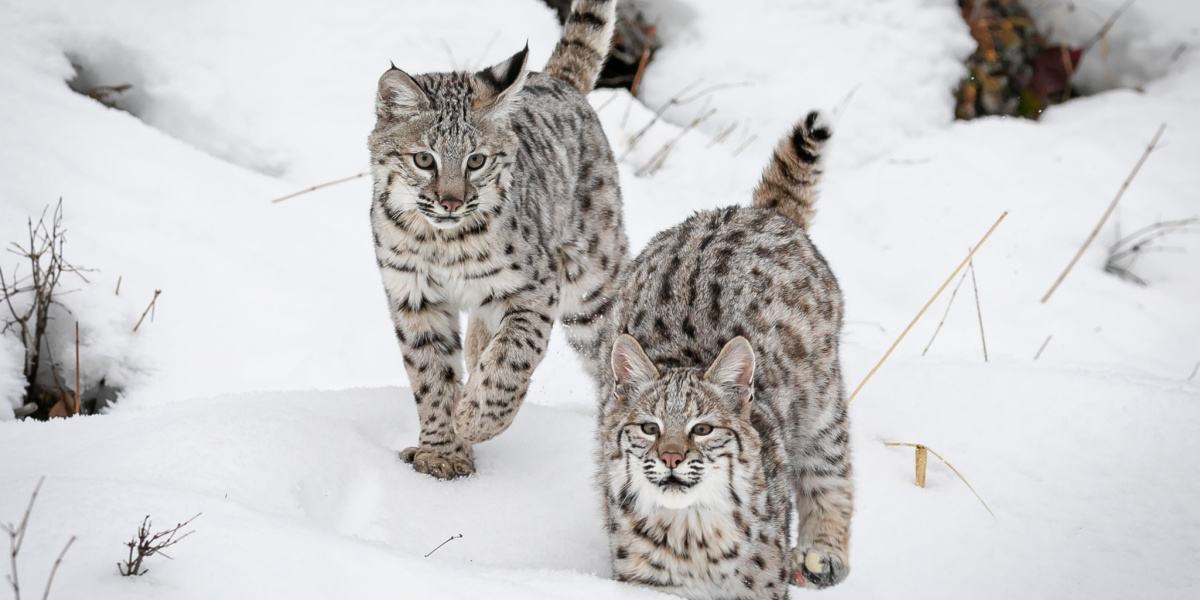
The bobcat (Lynx rufus), also known as the red lynx in North America, is a species of small wild cat. The bobcat is the smallest of four related lynx species (the other three are the Canada lynx, Eurasian lynx, and Iberian lynx).
With their short, spotted coats and tufted ears, bobcats look a lot like our domestic cats, though they are a bit larger than most house cats. Male bobcats average about 20 pounds, though they can weigh as much as 40 pounds. Female bobcats average about 15 pounds, but can weigh up to 33 pounds.
Some people claim that bobcats make good pets as long as you bring them home at a young age and raise them right. Owning a wild cat sounds like fun, but is it a good idea? Do bobcats really make great pets? The short answer is no, but let’s take a look at the cat family to learn what makes bobcats different from domestic cats, and less suitable as pets.
Wild Cats Versus Domestic Cats
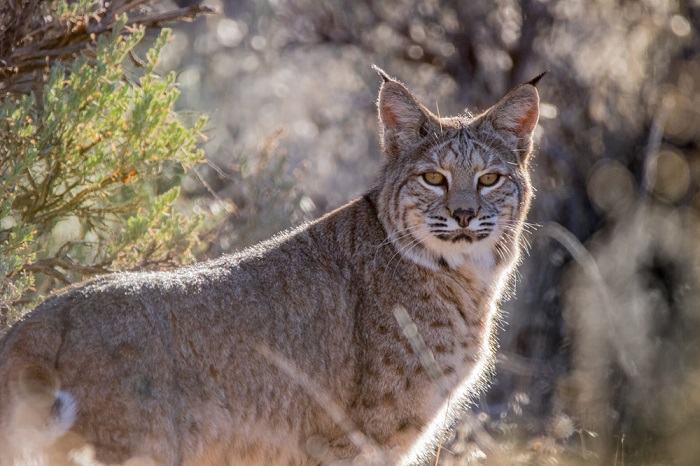
Except for the snow leopard, all members of the cat subfamily Pantherinae can roar but cannot purr.
All cats, both wild and domestic, belong to the same family: Felidae. The Felidae family is further split into two subfamilies, Pantherinae and Felinae.
The subfamily Pantherinae contains seven big cat species, which are classified into two genera, Panthera and Neofelis. The genus Panthera includes five big cat species: the lion (Panthera leo), tiger (Panthera tigris), jaguar (Panthera onca), leopard (Panthera pardus), and snow leopard (Panthera uncia). The genus Neofelis includes two species: the mainland clouded leopard (Neofelis nebulosa) and Sunda clouded leopard (Neofelis diardi).
The subfamily Felinae contains many different species of smaller wild cats, including many that you might be familiar with such as the African wildcat (Felis lybica), Asian golden cat (Catopuma temminckii), bobcat (Lynx rufus),caracal (Caracal caracal), cheetah (Acinonyx jubatus), cougar or mountain lion (Puma concolor), jungle cat (Felis chaus), leopard cat (Prionailurus bengalensis), ocelot (Leopardus pardalis), and serval (Leptailurus serval). Also in the subfamily Felinae is our domestic cat (Felis catus).
Except for the snow leopard, all members of the subfamily Pantherinae can roar but cannot purr. On the flip side, members of the subfamily Felinae can purr but cannot roar. This is because Pantherinae cats have a flexible hyoid, which is a small bone in the throat close to the larynx. In contrast, Felinae cats have bony hyoids.
Are Bobcats Related to Domestic Cats?
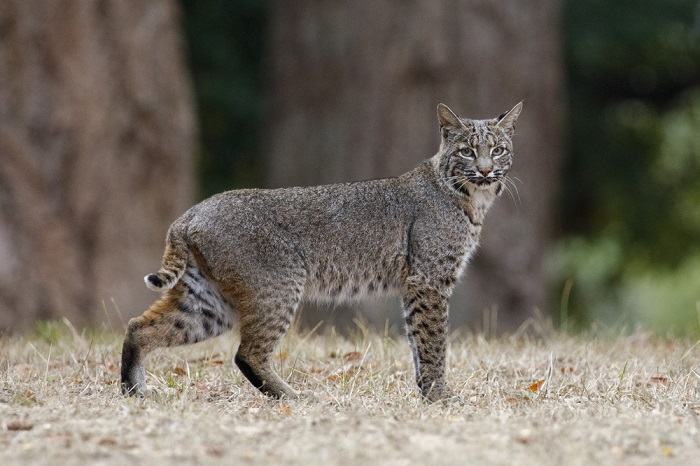
Even though bobcats and domestic cats are closely related, they are very different behaviorally.
Since they are members of the same subfamily, bobcats and domestic cats are somewhat closely related. This might make you think that bobcats can easily be tamed and raised as household pets. However, keep in mind that the subfamily Felinae also contains other cats that are closely related to domestic cats, but are obviously unsuitable as house pets, including cheetahs, cougars, and caracals.
Additionally, though related, bobcats and domestic cats are very different. There have been instances of bobcats mating with domestic cats, but no offspring between bobcats and domesticated cats has even been documented, suggesting that it is likely these two species cannot interbreed.
Do Bobcats Make Great Pets?

Wildlife educators strongly advise against raising bobcats as pets.
You might have read about people who have rescued bobcat kittens and now keep them as pets, or you might have seen a video on social media showing an adorable baby bobcat or majestic adult bobcat and thought it might be exciting to keep one as a pet. Though some people certainly do raise pet bobcats, wildlife educators strongly advise against this practice for many reasons.
First and foremost, bobcats, whether living in the wild or raised in a pet home, are unpredictable and dangerous. They are wild animals with instincts that can rear up at any time, including aggressive behavior.
Even bobcats hand-raised by humans since early kittenhood can unleash their wild side. These strong animals have powerful jaws, and sharp teeth and claws. Even just one bite or swipe can do serious damage.
Bobcats are also extremely territorial and messy. They are not easily housetrained to use litter boxes the way domestic cats are, and can do a lot of damage to your home when they exhibit normal bobcat behaviors like scratching to leave pheromones and visual territorial marks, spraying urine, and defecating in the home. For these reasons, bobcats might require outdoor enclosures rather than living as a pet inside your house.
If you keep a bobcat as a pet, you might have a difficult time finding a veterinarian that is willing to handle them and treat them if they become injured or sick. You might need to resort to finding a wild animal veterinarian that treats exotic cats, which can be costly and might be far from your home.
It can also be difficult and expensive to feed a bobcat, which needs a very specific, specialized diet, possibly including raw meat, rather than cat food from the pet store.
Finally, all wild animals, including bobcats, are happier in the wild. Unlike domestic cats, which have lived happily with humans for thousands of years, bobcats are not meant to cohabitate with humans. They can’t fully express their natural instincts if they are not living in the wild.
Is It Even Legal to Keep a Bobcat As A Pet?
Depending on what state you live in, owning wild animals like bobcats might be illegal. A few states allow you to keep wild animals as pets, but you might need to apply for a special license or permit.
Some states specifically ban ownership of wild animals, including bobcats. Some states have no laws on the book, so it might be legal, but it still doesn’t mean it’s a good idea.
Cat Breeds That Look Wild
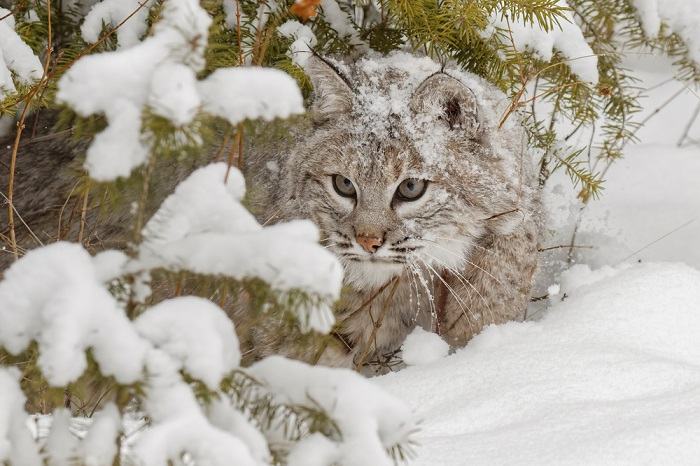
Some cat breeds have a wild appearance, but act just like any domestic cat.
Let’s say that you like the exotic look of a bobcat, but know that it’s best not to keep a wild species like the bobcat as pets. You’ll be happy to know that several domestic breeds of cat have been developed that are wild in looks only, and make excellent pets.
The hybrids mentioned below are fully established breeds accepted by The International Cat Association (an international all-breed cat breed registry), and are far removed from their wild relatives. Some of the breeds listed below were created using hybrid breeds and domestic breeds, so they look exotic but have very little wild blood.
It’s easy to have an exotic pet in looks that is gentle and accustomed to life with humans. If you’re looking for a new pet, here are some domestic cat breeds that looks wild, but act just like normal domesticated animals:
#1 Pixie-Bob

Though some people claim that the Pixie-Bob was created by crossing a bobcat with a domestic cat, this is not true. The breed was founded with a large, classic-patterned male cat with a short tail and another domestic female cat. One kitten from the litter, named Pixie, had a reddish-fawn coat and a wild look.
The owner of this kitten was so enamored with her look that she sought to create a breed of bobtailed cat with a wild appearance. The Pixie-Bob is loving, active, and social, and has been described as doglike.
#2 Serengeti
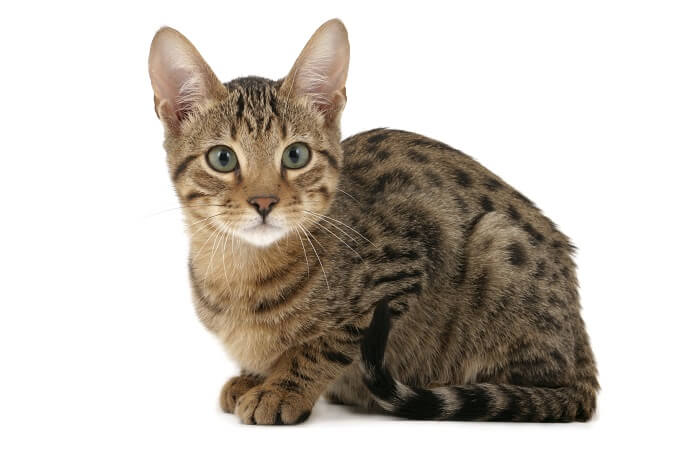
The Serengeti was created to look much like the wild African serval, but the breed contains very little wild blood. The Serengeti was developed using Bengals and Oriental Shorthairs. The very small amount of wild cat blood found in the Serengeti comes from the Bengal, which itself was created using the Asian leopard cat.
The breed is confident and friendly, and loves to follow their people around all over the house. They love to run and climb, and are very talkative.
Also Read:Â 12 Rare Coat Colors and Patterns In Cats
#3 Chausie
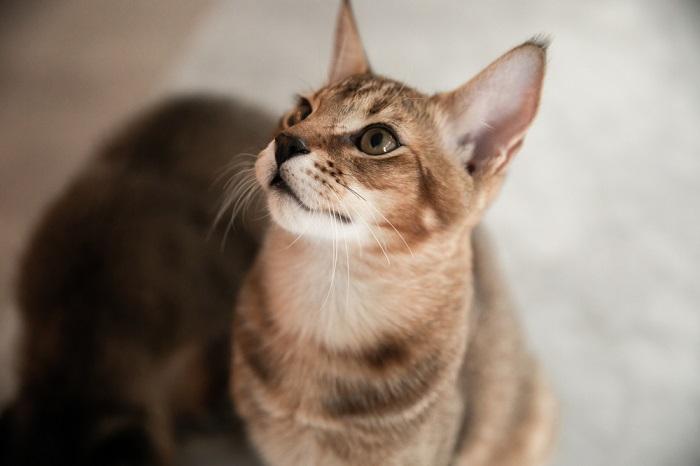
The Chausie (pronounced chow-see) is a hybrid breed that was created in the 1990s by breeding the jungle cat and domestic cats. The jungle cat (Felis chaus) is a small wild cat with sandy, reddish-brown or gray fur.
The Chausie comes in three color patterns: brown-ticked tabby, solid black, and grizzled tabby, which is a unique color pattern inherited from the jungle cat. The Chausie is active, athletic, playful, sociable, and affectionate.
#4 Savannah

The Savannah is a hybrid breed that was developed using the African serval and domestic cats. The serval (Leptailurus serval), is a small wild cat native to Africa that has a slender body, small head, and large ears. The Savannah is curious, outgoing, and assertive. The breed likes playing in water and needs lot of exercise and mental stimulation to be happy.
Also Read: 11 Things You Didn’t Know About Savannah Cats
#5 Bengal

The Bengal is another hybrid breed that was developed by breeding domestic cats with the Asian leopard cat (Prionailurus bengalensis), from which the breed inherited its beautiful coat pattern that is unique among all domestic cat breeds.
Some Bengal coats feature special spots called rosettes, which are similar to the markings found on leopards, jaguars, and ocelots. Bengals are active, confident, curious, and affectionate with their human family.
Also Read:Â 5 Important Facts Things To Keep In Mind Before Getting A Bengal Cat
#6 Toyger

The Toyger was created to look like a miniature tiger, but this breed has very little wild blood. It was developed using a domestic cat, a Bengal, and a street cat from India. The result was a cat with a bold vertical stripped pattern and circular markings on the head just like what is found in the tiger.
The very small amount of wild cat blood in the Toyger comes from the Bengal, which itself was created using the Asian leopard cat. The Toyger is laid-back, intelligent, and easily trained. The breed loves people and is exceptionally friendly.
Also Read:Â 7 Exotic Cat Breeds That Look Like Leopards
Frequently Asked Questions
Can a bobcat be tamed?
Taming a bobcat is something that generally happens when someone rescues a young bobcat as a kitten and provides care and socialization. Although bobcats raised from kittens might learn to live with humans, it is still a wild feline and can be unpredictable, even dangerous. Taming a bobcat is not a practice that recommended by wildlife experts.
Will a bobcat go after a person?
Wild bobcats attacks on humans are extremely rare. Bobcats avoid humans whenever possible, and if they have an unplanned run-in with a human, their first instinct is to run. That said, any wild animal, including bobcats, can be dangerous if cornered.
Can a bobcat mate with a domestic cat?
Although bobcats and domestic cats can mate with each other, no offspring between bobcats and domesticated cats has even been documented. This suggests that it is likely these two species cannot interbreed.
Are bobcats hard to take care of?
Exotic animals like bobcats are very difficult to care for. They are territorial and messy, and will spray urine, defecate out in the open, and scratch furniture and other objects to visibly mark their territory. Bobcats are carnivores and need to eat special diets, which can be expensive and difficult to obtain. It can also be difficult to find a veterinary who is able and willing to treat a wild animal like a bobcat, which can be stressful in the event the animal required medical care.




Very useful information. I love cats, but certainly owning a wild feline would be such a burden. (Not to mention, Illegal in my area…)
I suppose my domestic cats will do for now, not that they’re not already quite a handful!! XD